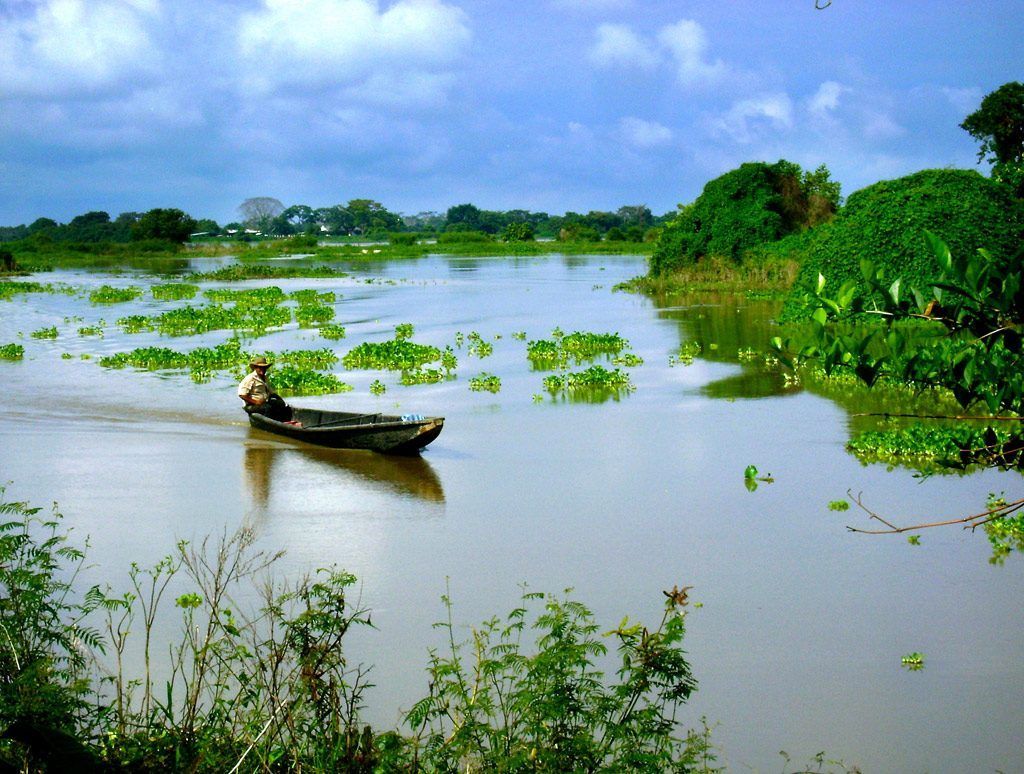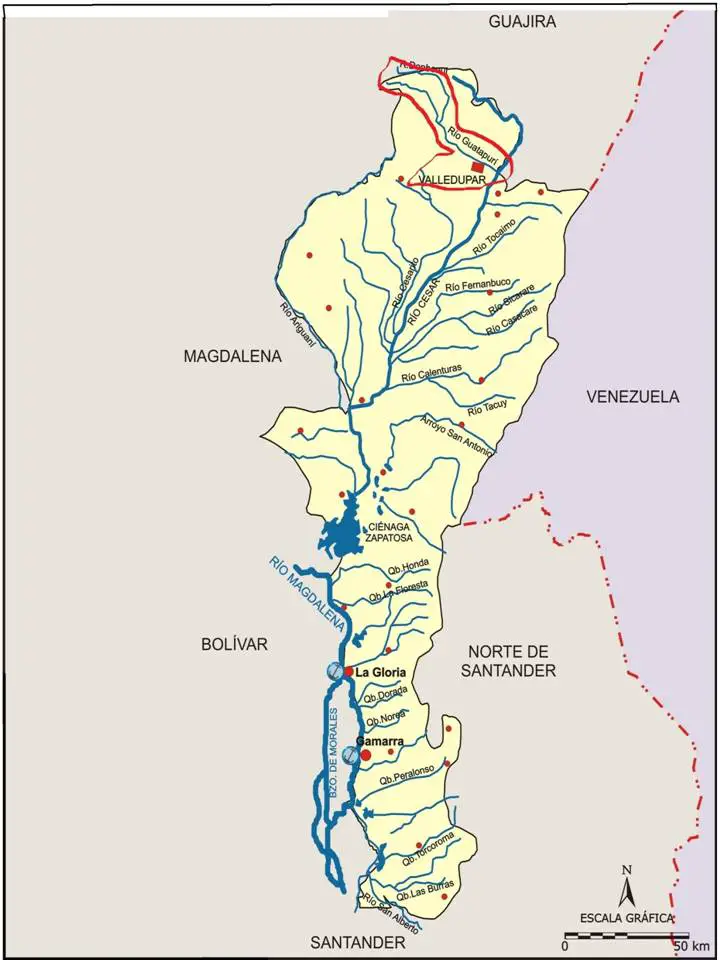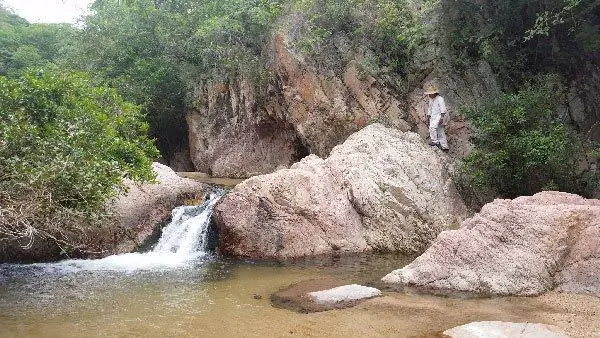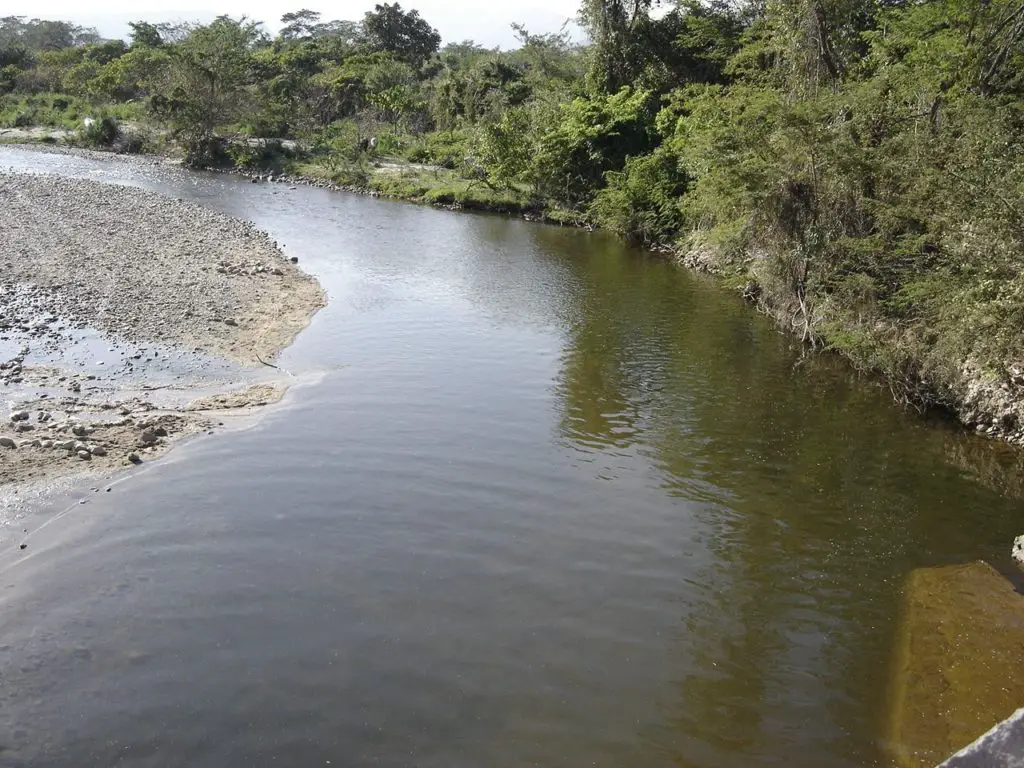The Cesar River rises in the Sierra Nevada de Santa Marta, in the Andes, and begins its journey in Colombia. It starts at an altitude of about 1800 metres above sea level, in the department of La Guajira, and flows through an area of about 178,197.79 hectares.
In 1994, the Cesar River and the Sierra Nevada were declared a state of emergency by the Pro-Sierra Foundation due to accelerated deforestation (see also Coco River).
Indice De Contenido
Map of Cesar
Flow and course of the river Cesar
In times of drought, this river of crystalline waters reveals its slender figure (see also Capanaparo River), which can be crossed without difficulty, while in winter its flow is extremely dangerous because it reaches great levels of force and depth. However, the Cesar River has been a source of water since the first settlers, the members of the “Cesares” tribe, used it as a source of water.
The Cesar River has a flow of about 150 cubic metres per second in its upper part, which allows small boats to navigate in areas with abundant water, and in others it shows only streams accompanied by very small fish.
The basin of the river Cesar is said to be the most important after the basin of the river Rancheria. Its source, in the beautiful Sierra Nevada region, recalls the emblematic landscapes of the Andean mountains and reliefs (see Motatan River).
From its source in the municipality of San Juan del Cesar, department of La Guajira, Colombia, it begins to flow over 280 km2, where it separates the majestic Sierra Nevada de Santa Marta from the Cordillera Nevada to form the beautiful valley of the Cesar River.
The Cesar River is fed by the Araguaní, Badillo, Guatapuri and Cesarito Rivers and flows into the Magdalena River at the Ciénica de Zapatosa, in the area of the Mamposina depression.
During its long journey, the Cesar River crosses eleven municipalities: San Juan del Cesar, Urumita and La Jagua del Pilar in La Guajira; and Valledupar, San Diego, La Paz, El Paso, Astrea, Chiriguaná and Chimichagua in Cesar.
Pollution in the Cesar River
The main activities that affect the Cesar River are agriculture, livestock farming, mining, the exploitation of raw materials and fishing, the most damaging of which is the discharge of untreated waste water.
Deforestation also threatens the life of the river. Native fauna has disappeared from the forest, including deer, tigers, skunks, manas, rabbits, guinea pigs and curassows. Fishing is still vital for many river dwellers, but pollution has reduced production, especially in times of drought.
Among the actions developed to contribute to the environmental recovery of the Cesar River, the creation of the Ecological Park in 1996 stands out, with the aim of recovering the river basin, improving the management of public spaces, environmental education and, above all, raising the awareness of the communities to create a collective ecological conscience.
However, the sector is still neglected and new corrective measures are needed to save the waters of this important natural resource. There is an urgent need to focus on wastewater treatment, as in the case of the Bogotá River, especially in Valledupar, with its high population density.
If this problem is not solved, it is estimated that the fish could become infected with parasites, which is no small matter as it would affect not only the species but also their consumers. It is also an issue raised by people who make their living from fishing, as they are usually more in touch with the situation and deal with this problem on a daily basis.
Inspiration to great writers and poets
The Cesar River has inspired great Latin American and world poets such as Hernando Marín Lacouture, Rafael Escalona and Fernando Dangond Castro, among others, to use its crystalline waters in beautiful literary works.
Musicians such as Rafael Escalona, in his corridos, have also included it in their creations, and Gabriel García Márquez, Nobel Prize for Literature, wrote in his book One Hundred Years of Solitude: “There is not a single lyric in the vallenato that does not correspond to a true episode of real life, to an experience of the author. A minstrel of the river Cesar does not sing because or when he feels like it, but when he feels the urge to do so, after having been stimulated by a real event”.
Salguero Bridge
It is located at the entrance to the town of Valledupar, and from there you can see that the area is very rich in biodiversity, with herons and ducks swimming in the water, despite its pollution, which is also used to irrigate the pastures in the area.
From the bridge you can see the pollution of the Cesar River, according to those who travel by car, from where you can see the extensive white water that the sewage treatment plant discharges into the river.







